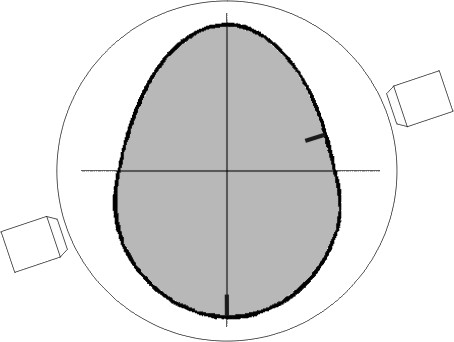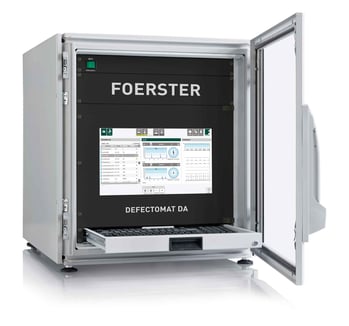Valve spring wire is used to properly open and close the valves in the motor. If the spring is broken due to a surface defect, an engine failure occurs. The automotive industry’s high demands on today’s motors requires high quality material for the valve spring wire.
In order to ensure the stability of the wire, special geometries for valve spring wire have been developed in recent years. Among other things, there are oval, egg or lemon shapes. The special shape presents completely new challenges to test systems due to the different distances between the wire sides and the sensor.
 Fig 1: Schematic drawing of a wire with egg shape
Fig 1: Schematic drawing of a wire with egg shape
In order to determine the quality of the valve spring wire, it is checked for surface defects during as well as after production. The company FOERSTER can rely on many years of experience with special geometries. During eddy current testing, the wire is tested for surface defects, the method being based on a comparison with reference defects.
FOERSTER uses the CIRCOGRAPH system in combination with a DEFECTOMAT channel for testing valve spring wire. While the CIRCOGRAPH test system detects longitudinal defects with its rotating probes, the DEFECTOMAT system checks for point and transverse defects.
A calibration process is performed to compensate for the different distances between the wire and the rotating CIRCOGRAPH sensors and thus the signal strength. This allows for a distance compensation and enables to find defects from a depth of 70 µm.
For the test with DEFECTOMAT customer-specific encircling coils can be developed. The adaptation to the material significantly increases the sensitivity and thus the probability of the defect detectability. The automated and nondestructive testing ensures the high product quality of the valve spring wire while at the same time maintaining high economic efficiency.
 Fig 2: DEFECTOMAT DA by FOERSTER
Fig 2: DEFECTOMAT DA by FOERSTER
For the surface testing of valve spring wire we recommend the test systems CIRCOGRAPH and DEFECTOMAT. These test systems allow for testing on transverse, longitudinal and punctual surface defects. High sensitivity and precision are achieved by distance compensation and customerspecific encircling coils.
For further information please visit our homepage: foerstergroup.com